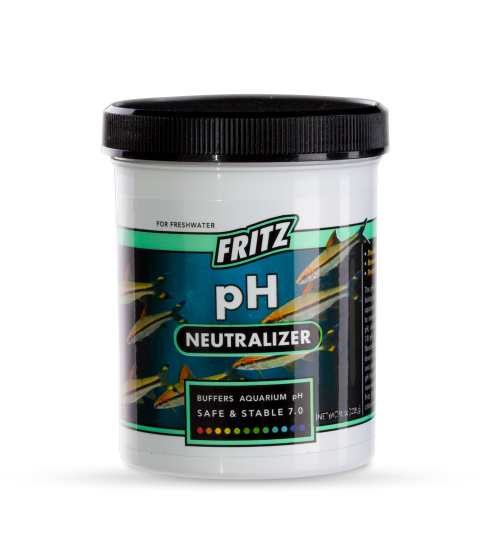About pH Neutralizer
Maintaining a balanced, stable pH is vital to the health of aquarium livestock and efficiency of the bio-filter. The pH of an aquarium can fluctuate due to biological and/or chemical activity within the aquarium. Often, the pH of a new system tends to measure at a higher pH value and subsequently drops as the system ages. pH Neutralizer adjusts high and low pH values to a level at which most freshwater community fish and plants thrive and reproduce, 7.0 pH. pH Neutralizer also removes chlorine, chloramine and ammonia.
Directions & Dosage
Use when setting up new aquariums, adding water or when making pH adjustments to existing aquariums.
Measure one level teaspoon of Fritz pH Neutralizer for every 10 gallons.
Retreat as needed.
Dosage may be safely doubled if needed.
Although Fritz pH Neutralizer can be added directly to aquarium environment at any time, best results are achieved by pre dissolving in new or replacement water prior to adding to aquarium.
Sizes
| Size | Treats | Item Number |
|---|---|---|
| 8 oz. jar | N/A | 80284 |
| 1lb. jar | N/A | 80285 |
| 3lb. jar | N/A | 80287 |
FAQs
FAQs
See below for frequently asked questions regarding pH Neutralizer.
-
My pH is way off. Can I add the pH Neutralizer and it will automatically go to a 7 pH?
First, you do not want a large pH change to happen quickly. The pH scale is logarithmic and as a result, each whole pH value below 7 is ten times more acidic than the next higher value. For example, pH 6 is ten times more acidic than pH 7 and 100 times (10 times 10) more acidic than pH 8. So what appear to be small changes on a pH test kit or meter are actually pretty big changes. Please make any pH changes gradually to avoid stressing your fish.
We recommend using pH Lower or pH Higher to make the larger scale pH changes and then to use pH Neutralizer to lock them in place at a stable, neutral pH
Submit a Question
Can't find what you're looking for? Ask us a new question.
Resources
| Resources |
|---|
| pH Neutralizer Info Sheet |
| pH Neutralizer SDS |
